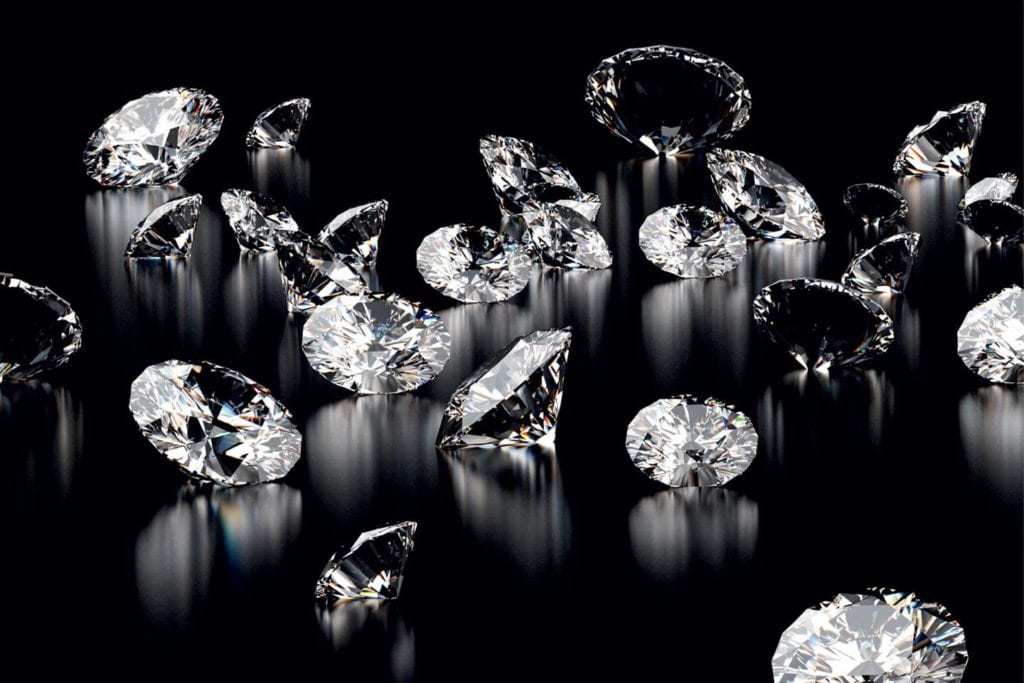A new group of diamonds stands out as being more perfect than almost all others in the $14 billion global diamond market. They are “chemically, physically and optically identical to a mined diamond,” according to the BBC. Decades in the making, as the first-ever man-made diamonds were created in a lab in Upstate New York by General Electric in December 1954, the market for lab grown diamonds is increasingly finding favor among a growing number of companies and consumers, the latter of which are warming up to the idea of buying diamonds that have not been extracted from the mountainous expanse of the Republic of Sakha in Russia or from mines in Botswana, many of which are operated by De Beers, and instead, are coming out of labs in Silicon Valley or in Portland, Oregon.
Unsurprisingly, millennials are said to be driving this growing interest, tempted by the marked affordability of these alternatives, and the lack of potential human rights abuses tied to the “cultured” stones, which are “visually identical” to “the real thing.”
It is against this background that the lab-grown diamond industry is expected to growth significantly within the next several years. According to Morgan Stanley, by the end of 2020, the market for lab-grown diamonds could account for 15 percent of the gem-quality diamond market, up from less than 1 percent in 2016. At the same time, Bain & Co. asserted in its 2018 “Global Diamond Industry Report” that “lab-grown diamonds are clearly here to stay,” particularly in light of “generational shifts in consumer preferences.”
From De Beers to the FTC
With such a potential for growth in connection with the popularity of synthetic diamonds at play, even traditional jewelers, such as De Beers – the stalwart diamond purveyor that coined the phrase “A Diamond is Forever” in 1947 – which have been largely been reluctant to be too praiseworthy of this new category of diamonds for obvious reasons, are paying attention.
De Beers – the 133-year old mining-and-trading company that maintained a monopoly over the supply of the world’s mined diamonds until the late 1990s – has made moves in the diamond growing space, making headlines in late 2018 when it announced that it would invest nearly $100 million over four years to build a factory in Georgia that will churn out 500,000 carats of lab-grown gems per year to be sold under its Lightbox brand.
Although, even as De Beers diversifies, it is not changing its primary tune. In fact, CEO Bruce Cleaver expressed some skepticism of the movement as a whole last year, asserting that unlike the prices of its mined diamonds, which remain relatively steady over time, “wholesale prices for lab-grown diamonds have fallen by up to 60 percent since the company began selling synthetic stones for jewelry in September 2019.” He added that “margins for the sector would continue to fall as improved technology increases the quality and volume of lab-grown diamonds,” according to Reuters.
The Federal Trade Commission (“FTC”) has been paying attention. In July 2018, the government agency – which is tasked with promoting consumer protection – issued updated Guides for the Jewelry, Precious Metals, and Pewter Industries that aim to prevent the use of deceptive representations by jewelry companies about their offerings, including lab-created diamonds.
In particular, the FTC “cautions marketers against using any gemstone name (e.g., diamond) to describe any man-made product unless an equally conspicuous ‘laboratory-grown,’ ‘laboratory-created,’ ‘[manufacturer name]-created,’ ‘synthetic,’ ‘imitation,’ or ‘simulated’ disclosure immediately precedes the name.” More than that, the FTC notes that marketers should use this terminology “only for products with essentially the same optical, physical, and chemical properties as the named stone.”
Last spring, the FTC confirmed that it had sent letters eight unnamed jewelry marketers “warning them that some of their online advertisements of jewelry made with simulated or laboratory-created diamonds may deceive consumers, in violation of the FTC Act.” The FTC noted in a statement that its letters specifically took issue with “examples where the advertising might imply that a simulated diamond is a lab-created or mined diamond, or that a lab-created diamond is a mined diamond, or where required disclosures about the source of the diamonds are not proximate to the individual product descriptions.”
In taking a stance on the terminology, the FTC is – in some way, at least – seemingly speaking to the potential staying power of the lab grown diamond market.
A Question of Value
As for what the rise of these alternative diamonds means for the likes of De Beers and other traditional purveyors of mined diamonds, not everyone is convinced that the rise of lab grown sparklers will be a deal breaker any time soon. While Bain & Co. notes the acceleration in the burgeoning field, it also asserts that “if the natural diamond industry can differentiate its stones from lab-grown diamonds (perhaps positioning lab-grown diamonds as fashion jewelry rather than luxury items), the effect on natural diamond demand by 2030 will be limited up to 5 percent to 10 percent in value terms.”
“Ultimately,” Bain asserts that “marketing and consumer perception” will be the determining factors when it comes to the effect that lab-grown diamonds have on the natural diamond market,” pointing to three scenarios: one in which “consumers perceive lab-grown and natural diamonds as interchangeable,” another in which they see them “as two different products,” or a third in which they fall “somewhere in between.” The consultancy states that “marketing could uphold the value of natural diamonds, especially if the prices of lab-grown diamonds continue to drop; and it’s probable that consumers will view lab-grown diamonds as fashion jewelry but not luxury goods, limiting the effect on natural diamond demand.”
Meanwhile, as Robert H. Frank, a professor of management at economics at Cornell’s Johnson Graduate School of Management, wrote for the New York Times, “Not even perfect replicas will extinguish strong preferences for mined diamonds.” In the short term, Mr. Frank suspects that nothing will change, including prices.
But beyond that, the lack of rarity in large, perfectly cut and colored diamonds might have an impact. “Longer term,” he says, the price premiums associated with real diamonds “may prove fragile.” Why? Because “wearing large diamonds, for example, will no longer be likely to signal significant wealth or attract admiring glances,” he says. “Tumbling prices will transform many longstanding social customs. An engagement diamond, for instance, will lose its power as a token of commitment once flawless two-carat stones can be had for only $25.”
While “technology won’t eliminate [the] need for suitable gifts and tokens of commitment, of course, and such things will still need to be both intrinsically pleasing and genuinely scary,” what it will change is “where those qualities reside.”











